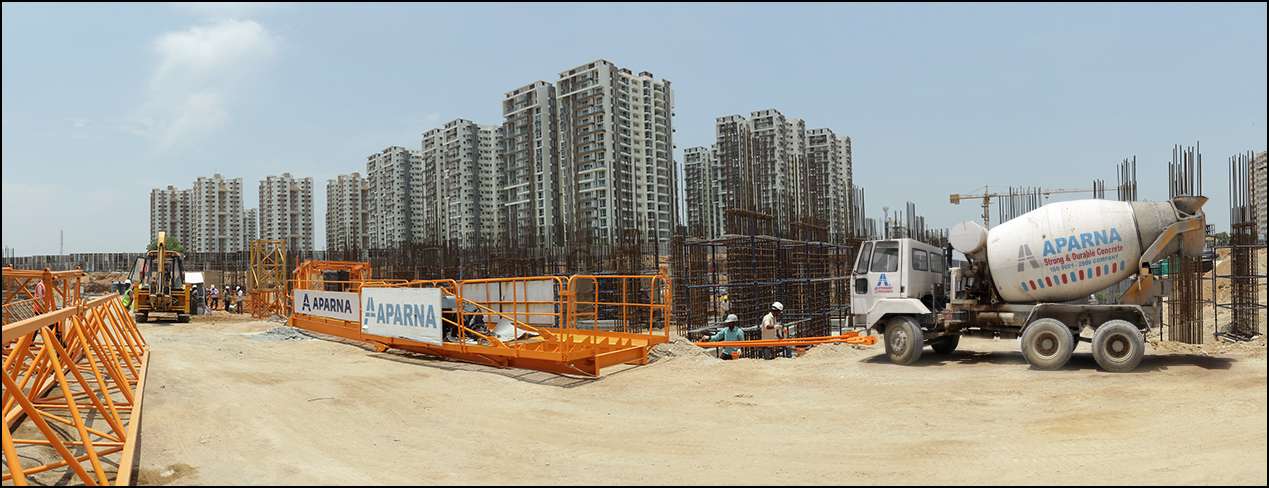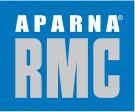The RMC market is on its path to a steady recovery, says Ashwin Reddy, Managing Director, Aparna Enterprises
Dec 17, 2021

How is the market for RMC shaping up in India?
The RMC market is on its path to a steady recovery after the tumultuous first and second waves of the pandemic. The first lock down resulted in the stalling of all ongoing projects, construction activities had come to a complete halt. The initial period where everyone struggled to find a foothold amidst the pandemic impacted the industry significantly. Businesses were able to overcome the situation only after the lockdown was lifted, which led to the resumption of economic and construction activities across regions, and the building materials industry also got back on its track gradually. The overall demand is seeing an increase thanks to the resumption of construction projects across regions. Other construction activities are also resuming gradually. Government’s thrust on infrastructure development has also resumed and is helping the industry to recover the lost ground.
Which are the RMCs you have introduced in the market in the recent past? What is the USP of the RMCs?
RMC consists of cement as main ingredient with several other standard components – Aggregates, sand and water. What differentiates RMCs is different grades of RMC which is customised as per structure’s requirement. Aparna RMC offers concrete mix in different grades from M-05 to M-80. RMC is customised concrete mix which is ready to use at the construction site. RMC ensures constant ratio of various ingredients across different batches, to ensure uniform strength. For high rise buildings, the concrete mix is lifted through special pumps.
What are the innovations going on at your R&D to bring out strong and sustainable concrete?
We use state-of-the-art machinery to produce quality RMC across batches. Aparna RMC uses large storage bins to ensure uninterrupted supply. Aparna RMC uses Schwing Stetter equipment for production and batching. R&D is a constant activity to ensure usage of optimum cement quantity and other ingredients. A lot of research is done on a continuous basis for supplying self-compacting concrete used in high rise buildings
With stringent regulation in force for project completion, how are your RMC helping in faster completion of projects?
Continuous supply of RMC contributes majorly in timely completion of any project. We always map our production capacity with our customer’s requirements. RMC consumption has been increased at steady pace due to shift from traditional wall system (Bricks and Blocks) to concrete walls on account of increase in high rise buildings and strict timelines. RMC has various grades/design mixes which can cater to all the building concrete requirements. This is also one of the pull factor for RMC.
There are reports of building collapses during monsoon; being a leading RMC manufacturer what role RMC can play in protecting the building from collapse?
Building/structure collapse due to concrete mix is a very rare possibility. Building structure collapse happens due to faulty design of the foundation and unauthorized alterations to the structure.
How is the unorganized nature of the RMC industry affecting the organized players? Has the introduction of RERA and GST helped in expanding the organized players market share?
With the introduction of RERA and GST, majority of the project business is catered by organized RMC Players. However since the entry barrier is low, unorganized players are playing at considerably low product price for catering to the small & big projects.
How are you overcoming skilled manpower shortages?
One way of overcoming skilled manpower shortages is to up-skill the existing employees. The term however is not restricted to just technical skills, but it also includes skills like being mindful of safety, team work and mental health in the work place; everything that contributes to fostering a wholesome work environment. We continuously invest in training our staff on all important topics to increase their awareness.
What are the challenges faced by RMC players in India?
The pandemic brought about several disruptions in business continuity of building materials products. While business activities have resumed, certain factors continue to slow down the momentum and growth. A key factor that impacts the demand for RMC is the increase in the prices of raw materials. Fluctuation in cement prices is also a key factor impacting the industry. Rising fuel prices coupled with cost rise in the supply chain transportation are also aspects that influence the industry’s revenue and growth. Decline in availability of cash or cash flow also affects the demand-supply chain for commercial and residential constructions which has direct impact on the RMC industry.
Your take on the government policies and regulations and the tweaks required to propel the sector?
The building material industry is one of the largest employers in India. A key driver that enables the growth in this industry is the infrastructural development of the country. The government during its budget 2020-21, had proposed projects amounting to INR 105 lakh crores for the next five years, and had announced the fast-tracking of projects. However, there are certain pain points that require government attention, when it comes to infrastructural development in India. A few of them are; timely interventions and quicker clearances and approvals especially in terms of environmental clearances; adequate funding support from the banks and financial institutions. Long term funding support in case of long gestation projects and compulsory adherence to the contracts irrespective of political or policy changes; launch of projects like the Housing for All 2022 scheme, etc, will provide the much needed boost for the industry, as all these initiatives will need supplies of RMC.
Furthermore, all recent policy reforms such as GST, RERA, REIT, etc, are all aligned to strengthen the future of construction industry in India. However, vision and investment alone would not be enough to turn around this infrastructure dream into a reality; there are many planning, technical and financial oriented issues that needs to be taken into account and handled immediately and efficiently.
Lastly, what are your growth plans for your organization for the next three years?
Our aim is to further strengthen our market share and presence in the RMC segment. We are looking at utilizing our production capabilities to the fullest and increase consumer base in both project and retail segments. We are also increasing the number of RMC plants to have greater coverage of the market.
